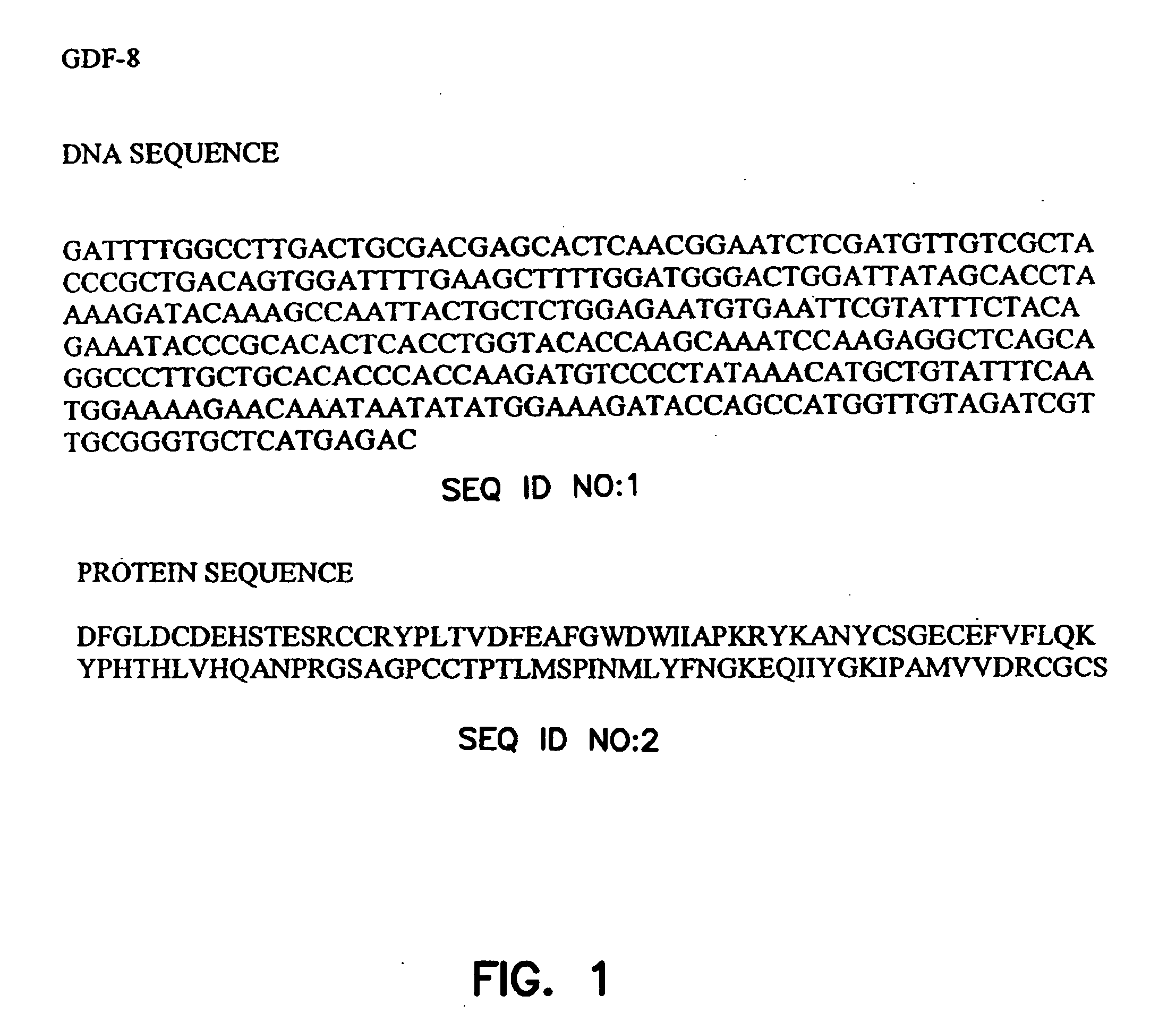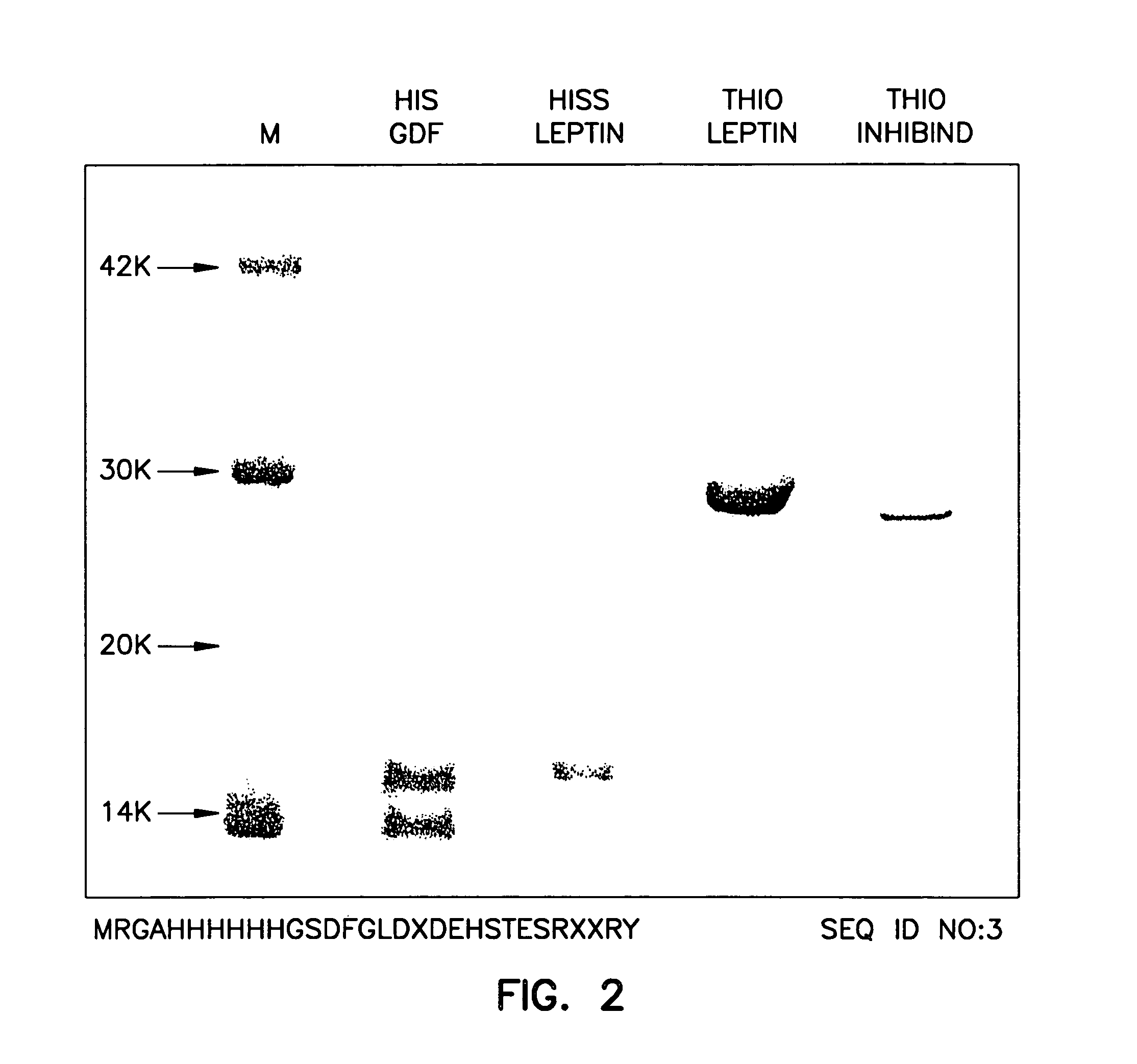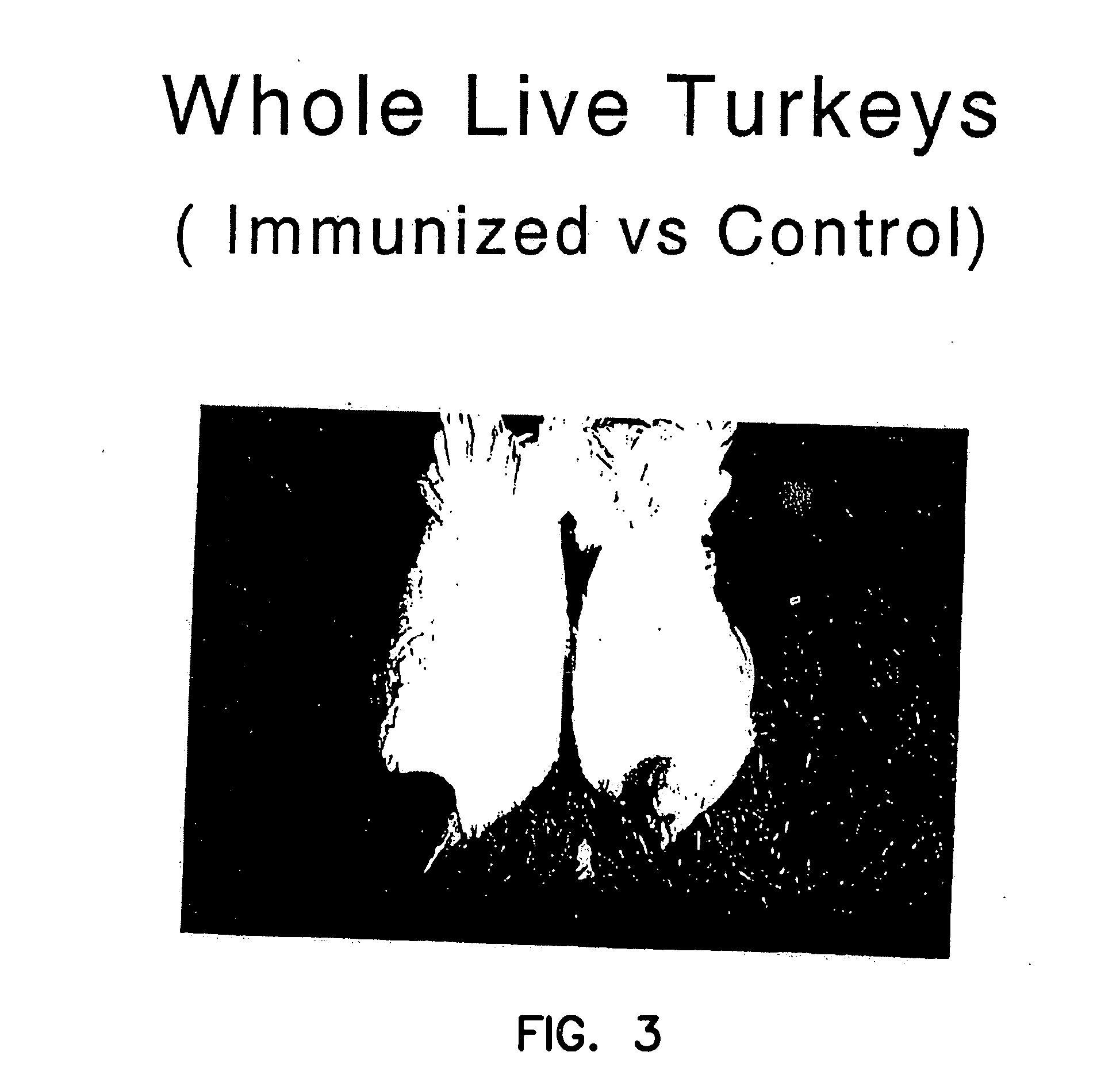Use of passive myostatin immunization
a technology of myostatin and immunization, which is applied in the direction of antibody medical ingredients, carrier-bound antigen/hapten ingredients, peptide/protein ingredients, etc., can solve the problem that peptide immunogens are less likely to result in effective increases in igg, and achieves the effects of reducing the time to production, increasing the amount of semen, and being particularly useful
- Summary
- Abstract
- Description
- Claims
- Application Information
AI Technical Summary
Benefits of technology
Problems solved by technology
Method used
Image
Examples
example 1
[0152] To enhance the immunogenicity of myostatin, myostatin was conjugated to a carrier before being introduced into turkey hens. The mature coding region of turkey myostatin DNA (372 base pairs encoding 109 amino acid residues) (FIG. 1) was subcloned into the PQE expression vector system (Qiagen, Inc.) using E. coli strain M15(pREP4) and SG13009 (pREP4). Other fusion protein expression systems may also be employed, e.g., thioredoxin expression vector system (Invitrogen, San Diego) using GI 724 and GI 698 E. coli strains.
[0153] Purification His-tag Fusion Proteins. To purify a His-tag fusion protein, a glycerol stock of bacteria is inoculated on LB / ampicillin / kanamycin plates (100 μg / ml ampicilin, 25 μg / ml kanamycin) and incubated overnight at 37° C. A 50 ml liquid culture is inoculated with a single colony and incubated overnight at 37° C. The 50 ml overnight culture is added to 2 L of LB / ampicillin / kanamycin media (100 μg / ml ampicilin, 25 μg / ml kanamycin) at 37° C. Twenty ml of ...
example 2
[0166] Myostatin peptides were prepared. The peptides were C1 (Asn-Met-Leu-Tyr-Phe-Asn-Gly-Lys-Glu-Gln-Ile-Ile-Tyr-Gly-Lys-Ile; residues 5-15; SEQ ID NO:4), D1 (Asp-Cys-Asp-Glu-His-Ser-Thr-Glu-Ser-Arg-Cys; residues 33-41; SEQ ID NO:5), and E1 (Ile-Ala-Pro-Lys-Arg-Tyr-Lys-Ala-Asn; residues 83-98; SEQ ID NO:6). Each received a peptide immunogen and the sequences were chosen based on relative hydrophilicity / hydrophobicity.
[0167] The oligopeptides were coupled to the carrier protein KLH using the method of Lerner et al. (1981). Five grams of Sephadex G-25 was equilibrated with 0.05 M sodium phosphate pH=7.0 for about 3 hours at 25° C. The keyhole limpet hemocyanin (KLH, Calbiochem 374805) was dissolved in 0.05 M Na phosphate, pH=6.0 (20 mg / ml). Maleimidobenzoyl-N-hydroxysuccinimide ester (MBS, Calbiochem 442625) was dissolved in N,N-dimethyl formamide (Sigma; 5 mg / 100 μl). Two hundred μl of KLH (4 mg) and 10 μl MBS (0.5 mg) was combined and incubated with gentle vortexing for 30 minute...
PUM
| Property | Measurement | Unit |
|---|---|---|
| ionic strength | aaaaa | aaaaa |
| pH | aaaaa | aaaaa |
| pH | aaaaa | aaaaa |
Abstract
Description
Claims
Application Information
 Login to View More
Login to View More - R&D
- Intellectual Property
- Life Sciences
- Materials
- Tech Scout
- Unparalleled Data Quality
- Higher Quality Content
- 60% Fewer Hallucinations
Browse by: Latest US Patents, China's latest patents, Technical Efficacy Thesaurus, Application Domain, Technology Topic, Popular Technical Reports.
© 2025 PatSnap. All rights reserved.Legal|Privacy policy|Modern Slavery Act Transparency Statement|Sitemap|About US| Contact US: help@patsnap.com



